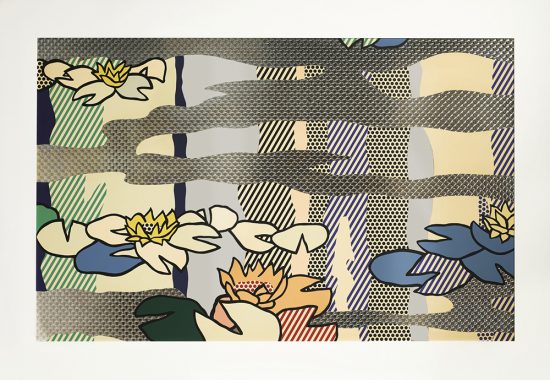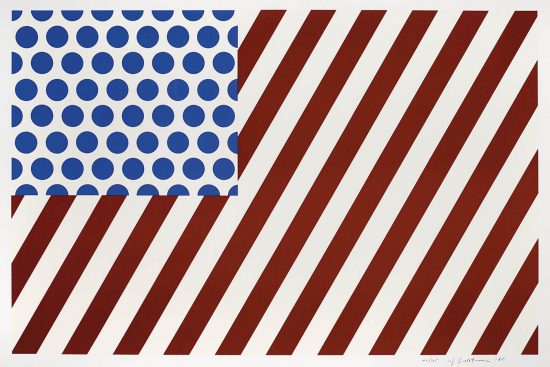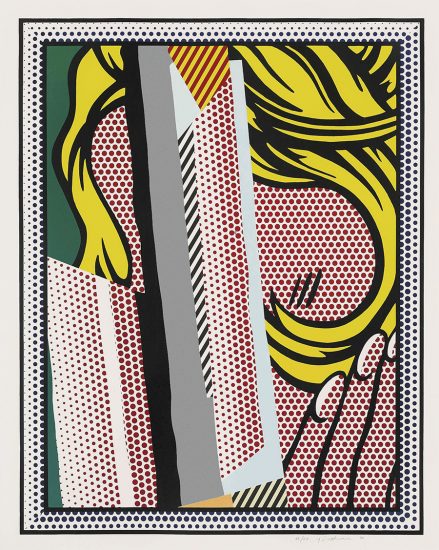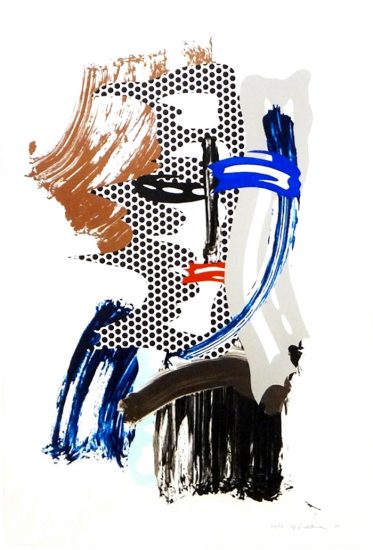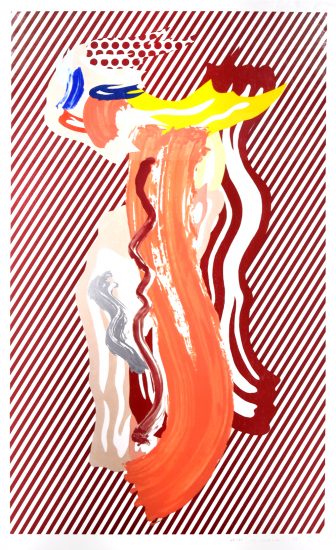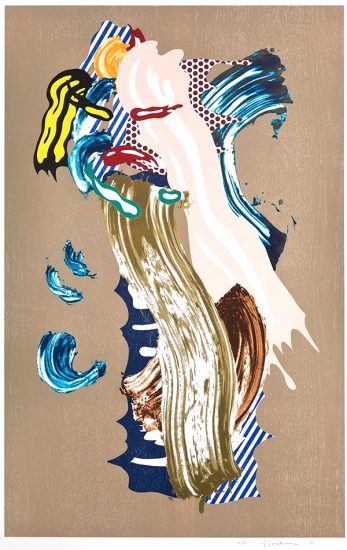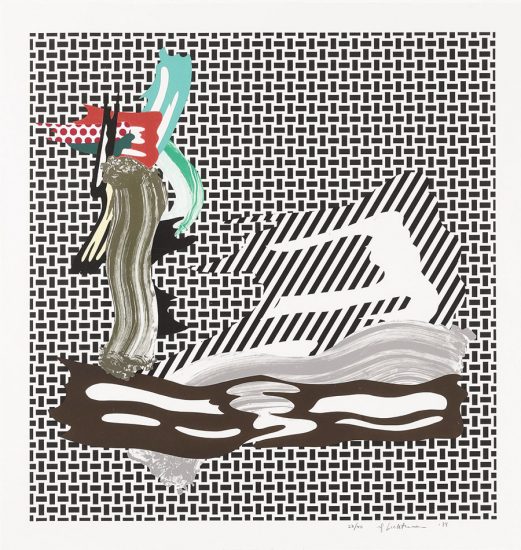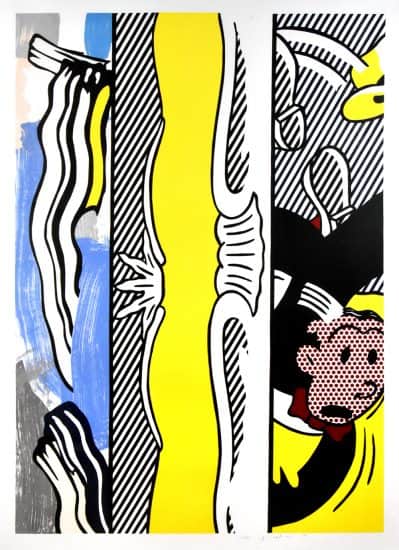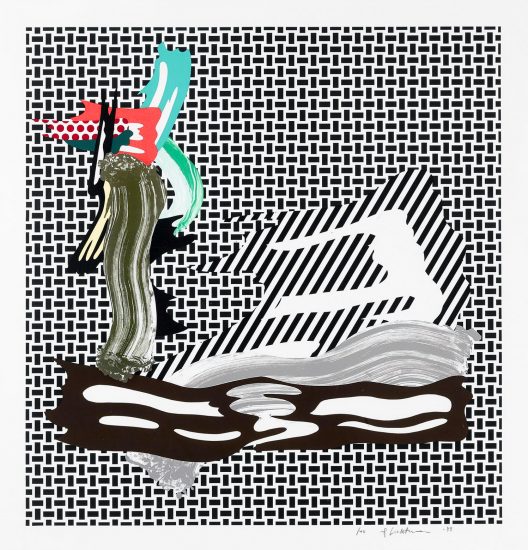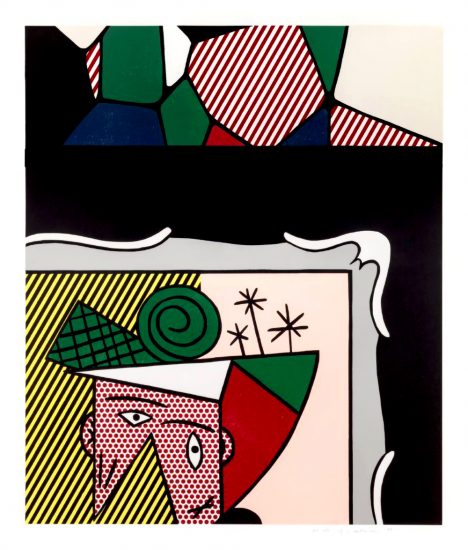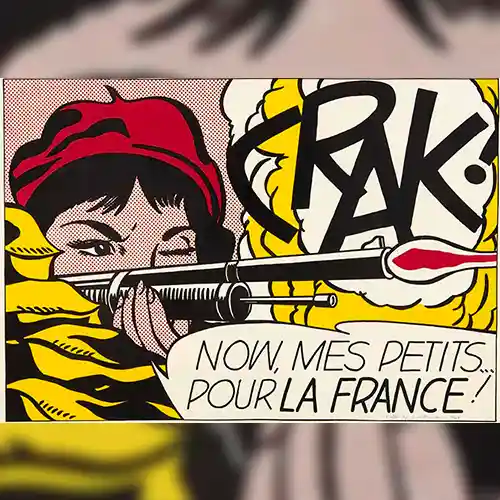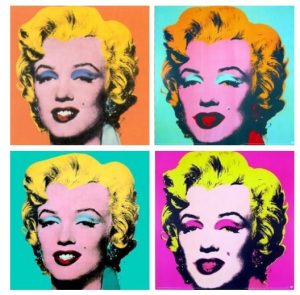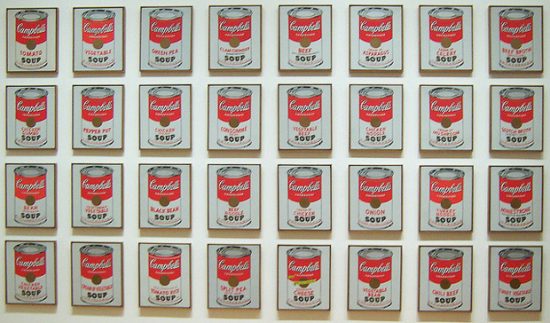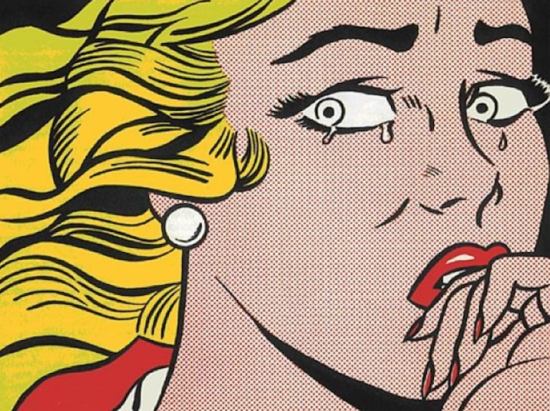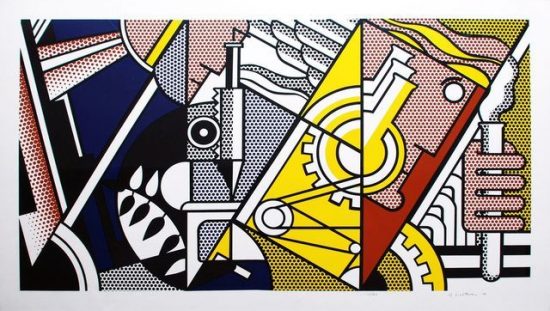Roy Lichtenstein's Crying Girl (1963), originally made as an invitation to his New York show, was one of his earlier forays into pop art. Many of his comic inspired works dealt with so-called angsting women in one way or another.
Roy Lichtenstein, a famous pop artist, was highly influenced by comic book style from 1961-1965. Lichtenstein drew on the dark, thick lines and limited color palate of comics for his own art. He also heavily employed ben-day dots. Ben-day dots were the technique that was used at the time to print comics. Rather than printing ink across the whole page, instead one would print it in dots and allow people’s eyes to fill in the remaining color. This was a money saving technique. Stencils were used to paint the dots uniformly. Pop Art got to the crux of the interaction between commercial and fine art. Lichtenstein played with this dynamic by imitating a very mechanical process – and getting the expected result – but applied it as a fine art practice. Essentially, he was recreating a mechanical process with his own hands, and basking in the contradiction of it all.
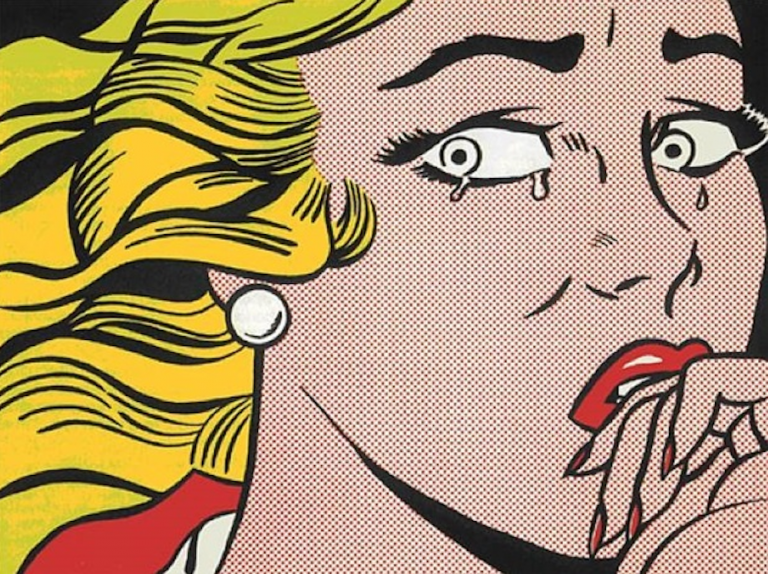
Roy Lichtenstein Crying Girl, 1963, an offset lithograph, was one of his earlier forays into pop art. It was originally made as an invitation to his show in New York at the Leo Castelli Gallery. Aside from the invitations which he folded in four, Lichtenstein kept some and signed them. Many of Lichtenstein’s comic inspired paintings and prints dealt with so-called angsting women in one way or another. He would portray a snapshot of a larger narrative and allow the viewer to fill in the remainder. In terms of Crying Girl, 1963, she looks out of the corner of her eyes to the right and holds her hands to her mouth as if muffling a gasp. Tears bead out of the corner of her eyes and the viewer wonders – what is she looking at? Part of what makes Lichtenstein’s works, and Crying Girl, 1963 in particular, so captivating is that they carry such intense emotion, if only for a moment in time.
- Sooke, Alastair. “Viewfinder: ‘Crying Girl’ by Roy Lichtenstein (1963),” The Telegraph. March 18, 2006. http://www.telegraph.co.uk/culture/art/3650980/Viewfinder-Crying-Girl-by-Roy-Lichtenstein-1963.html
- Stamberg, Susan. “One Dot At A Time, Lichtenstein Made Art Pop,” October 15, 2012. http://www.npr.org/2012/10/15/162807890/one-dot-at-a-time-lichtenstein-made-art-pop
Read more about Roy Lichtenstein's art style.

